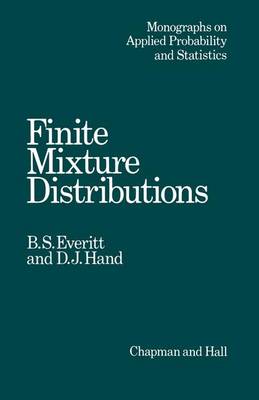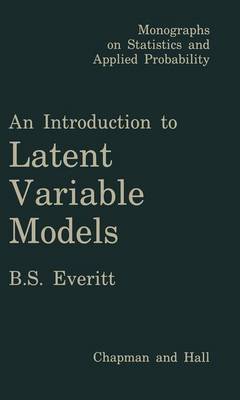Monographs on Statistics & Applied Probability
1 primary work • 2 total works
Book 15
Finite mixture distributions arise in a variety of applications ranging from the length distribution of fish to the content of DNA in the nuclei of liver cells. The literature surrounding them is large and goes back to the end of the last century when Karl Pearson published his well-known paper on estimating the five parameters in a mixture of two normal distributions. In this text we attempt to review this literature and in addition indicate the practical details of fitting such distributions to sample data. Our hope is that the monograph will be useful to statisticians interested in mixture distributions and to re- search workers in other areas applying such distributions to their data. We would like to express our gratitude to Mrs Bertha Lakey for typing the manuscript. Institute oj Psychiatry B. S. Everitt University of London D. l Hand 1980 CHAPTER I General introduction 1. 1 Introduction This monograph is concerned with statistical distributions which can be expressed as superpositions of (usually simpler) component distributions. Such superpositions are termed mixture distributions or compound distributions.
For example, the distribution of height in a population of children might be expressed as follows: h(height) = fg(height: age)f(age)d age (1. 1) where g(height: age) is the conditional distribution of height on age, and/(age) is the age distribution of the children in the population.
For example, the distribution of height in a population of children might be expressed as follows: h(height) = fg(height: age)f(age)d age (1. 1) where g(height: age) is the conditional distribution of height on age, and/(age) is the age distribution of the children in the population.
An Introduction to Latent Variable Models
by Brian S Everitt and Bob Everett
Published 6 September 1984
Latent variable models are used in many areas of the social and behavioural sciences, and the increasing availability of computer packages for fitting such models is likely to increase their popularity. This book attempts to introduce such models to applied statisticians and research workers interested in exploring the structure of covari- ance and correlation matrices in terms of a small number of unob- servable constructs. The emphasis is on the practical application of the procedures rather than on detailed discussion of their mathe- matical and statistical properties. It is assumed that the reader is familiar with the most commonly used statistical concepts and methods, particularly regression, and also has a fair knowledge of matrix algebra. My thanks are due to my colleagues Dr David Hand and Dr Graham Dunn for helpful comments on the book, to Mrs Bertha Lakey for her careful typing of a difficult manuscript and to Peter Cuttance for assistance with the LlSREL package. In addition the text clearly owes a great deal to the work on structural equation models published by Karl Joreskog, Dag Sorbom, Peter Bentler, Michael Browne and others.

